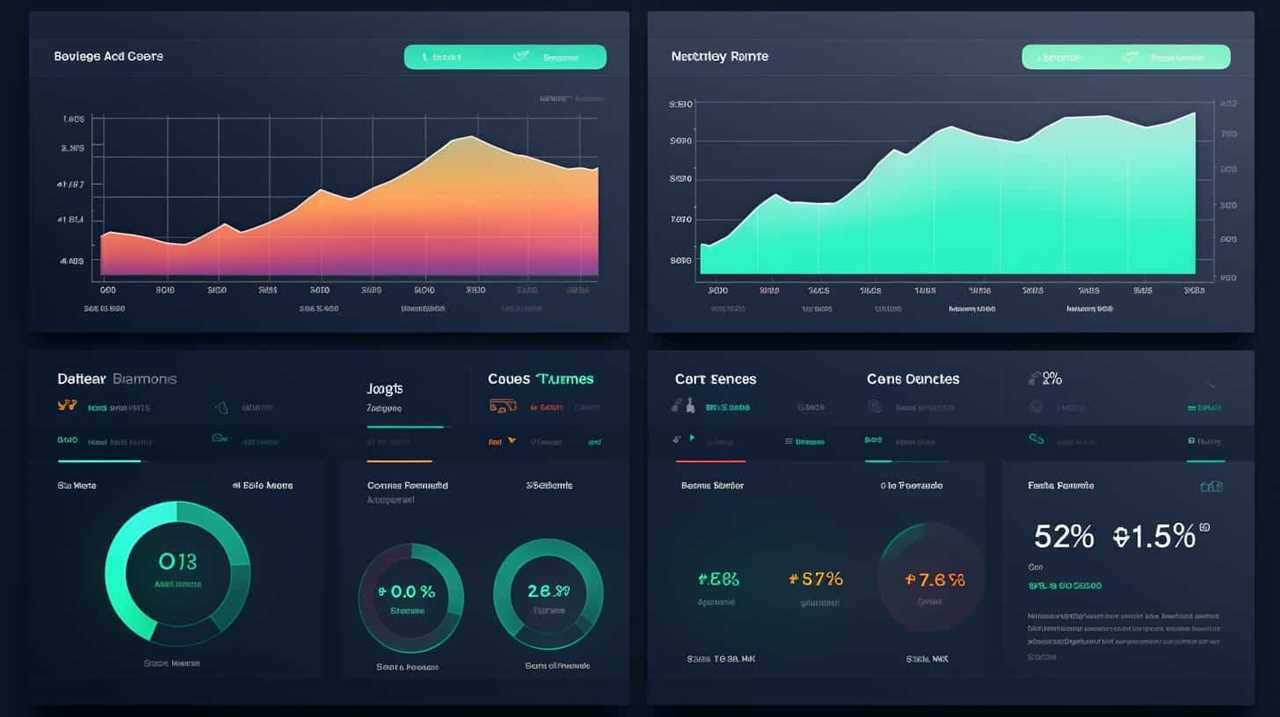By 2020, it is anticipated that 50% of all search queries will be done through voice search, showcasing the growing trend in its usage.
That’s why it’s crucial for us to stay ahead of the game and master the top voice search techniques for superior SEO.
In this article, we’ll explore how to understand voice search behavior, optimize for long-tail keywords, focus on featured snippets, improve website loading speed, and utilize structured data markup.
Get ready to dominate the voice search landscape and boost your SEO rankings!

Key Takeaways
- Voice search queries are different from traditional text-based searches and tend to be more conversational and natural.
- Optimizing websites and content for voice search requires understanding the language and intent behind long-tail queries.
- Featured snippets at the top of search engine results can significantly impact visibility and traffic for voice search.
- Improving website loading speed, utilizing structured data markup, and optimizing meta tags and descriptions are essential for voice search optimization.
Understand Voice Search Behavior
To effectively optimize for voice search, we must first understand the behavior of voice search users. Voice search queries are different from traditional text-based searches. Users tend to phrase their queries in a more conversational and natural manner.
This is where natural language processing (NLP) comes into play. NLP allows voice assistants to understand and interpret the meaning behind the words spoken by users, enabling them to provide relevant and accurate search results.
By analyzing voice search behavior, we can identify patterns and trends in the way people interact with voice assistants. This knowledge can then be used to optimize websites and content for voice search, ensuring that they align with the language and intent of voice search queries.
Understanding voice search behavior is crucial for successful SEO in the era of voice assistants.

Optimize for Long-Tail Keywords
Now let’s delve into how we can optimize for voice search by focusing on long-tail keywords.
As we’ve discussed earlier, voice search trends are on the rise, and it’s crucial to adapt our SEO strategies accordingly.
Long-tail keywords are longer, more specific phrases that users are likely to use when performing voice searches. By incorporating these keywords into our content, we can increase the chances of our website being ranked higher in voice search results.
It’s important to understand the intent behind these long-tail queries and create relevant, targeted content that addresses users’ needs. By doing so, we can optimize our website for voice search and improve our overall SEO performance.

Now, let’s move on to the next section and explore how we can focus on featured snippets to further enhance our voice search optimization efforts.
Focus on Featured Snippets
As we optimize for voice search by incorporating long-tail keywords, we can further enhance our SEO strategy by focusing on featured snippets. Featured snippets are the concise answers that appear at the top of search engine results pages, providing quick and relevant information to users. By aiming to secure a featured snippet, we can increase our visibility and drive more traffic to our website.
Voice search strategies for local businesses can greatly benefit from this approach, as featured snippets often provide location-based information. Additionally, the impact of voice search on mobile SEO can’t be ignored, as more and more users are relying on voice assistants on their smartphones.
Improve Website Loading Speed
By prioritizing website loading speed, we can further optimize our SEO strategy for voice search and enhance user experience. A fast-loading website not only improves search engine rankings but also keeps users engaged and satisfied.

Here are five techniques to improve website loading speed:
- Increase server capacity: Upgrade to a more powerful server or opt for a dedicated hosting plan to handle high traffic volumes.
- Minimize HTTP requests: Reduce the number of requests made by combining CSS and JavaScript files, and optimizing images.
- Enable browser caching: Store static files on users’ devices to speed up subsequent visits.
- Optimize code: Minify HTML, CSS, and JavaScript files to remove unnecessary characters and reduce file size.
- Use a content delivery network (CDN): Distribute website content across multiple servers worldwide for faster delivery.
Implementing these strategies will result in a faster loading website, leading to improved SEO and a better user experience.
Utilize Structured Data Markup
To further optimize our SEO strategy and enhance user experience, we can utilize structured data markup, which allows search engines to better understand and display our website’s content. Schema implementation is a key aspect of structured data markup, as it provides a standardized format for organizing and labeling information on our web pages. By implementing schema, we can provide search engines with detailed information about our content, such as product prices, ratings, and reviews. This enables search engines to present our content in a more visually appealing and informative way to users. Additionally, structured data markup plays a crucial role in voice search analytics. By structuring our data, we make it easier for voice assistants like Siri, Alexa, and Google Assistant to extract and deliver relevant information to voice search queries. This improves the accuracy and efficiency of voice search results, helping us reach a wider audience.
| Benefits of Structured Data Markup | ||
|---|---|---|
| Better visibility in search results | Enhanced user experience | Improved click-through rates |
| Increased visibility in voice search | Enhanced mobile search results | Boosted SEO performance |
| Rich snippets for more informative results | Improved targeting and personalization | Increased website credibility |
Frequently Asked Questions
How Does Voice Search Behavior Differ From Traditional Text-Based Searches?
Voice search behavior differs from traditional text-based searches by utilizing spoken language instead of typed keywords. This has a significant impact on SEO as it requires optimizing content for natural language queries and long-tail keywords.

What Are Some Effective Strategies for Optimizing for Long-Tail Keywords in Voice Search?
We can optimize for long-tail keywords in voice search by using conversational language and focusing on natural phrases. For example, instead of targeting "best restaurants Miami," we could target "Where can I find the best restaurants in Miami?"
How Can Businesses Leverage Featured Snippets to Improve Their Voice Search Visibility?
To improve voice search visibility, we leverage featured snippets by prioritizing natural language understanding and incorporating conversational phrases in our content. This helps us optimize for long-tail keywords and enhance our SEO strategy.
What Are the Consequences of Having a Slow-Loading Website on Voice Search Rankings?
Having a slow-loading website can have consequences on voice search rankings. It impacts user experience and can result in potential loss of traffic. Ensuring a fast-loading site is crucial for maintaining high visibility in voice search.
Can You Provide Examples of How Structured Data Markup Can Enhance Voice Search Results?
Sure, structured data markup is a powerful tool for voice search optimization. It enhances search results by providing specific information in a format that voice assistants can easily understand and deliver to users.

Which Keyword Research Tools are Most Effective for Voice Search Optimization?
When it comes to voice search optimization, the effectiveness of keyword research tools for seo cannot be overlooked. These tools play a crucial role in identifying relevant keywords that align with voice search queries. Some of the most effective options include Google Keyword Planner, SEMrush, and Ahrefs. By utilizing these tools, businesses can optimize their content for voice search and enhance their visibility in this growing trend.
Conclusion
In conclusion, incorporating voice search techniques into your SEO strategy is crucial for staying ahead in the digital landscape.
Did you know that by 2022, it’s estimated that voice-based shopping will reach $40 billion in the United States alone? This staggering statistic highlights the growing importance of optimizing your website for voice search to attract and engage customers in this rapidly evolving market.
Don’t miss out on this opportunity to enhance your SEO efforts and drive superior results.










